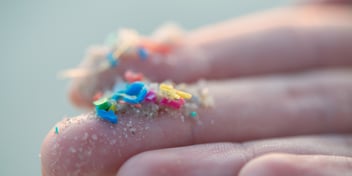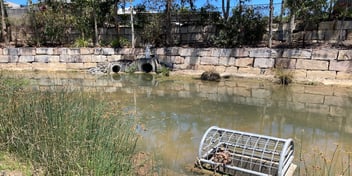A sight for sore eyes: Contact lenses contributing to microplastic pollution
Flushing disposable contact lenses down the sink or toilet is contributing to the world’s growing microplastic problem, according to new research.
In a study of how contact lenses behave once they end up in wastewater treatment plants, researchers from Arizona State University in the US found the process can break the lenses into shards of plastic, which then become part of the microplastic pollution increasingly present in oceans and waterways.
Once broken into microplastics, the contacts can then absorb other pollutants and are eaten by fish and other aquatic life, meaning they could eventually make their way onto our dining tables.
Presenting their findings at the American Chemical Society’s annual national meeting, researchers Varun Kelkar, Rolf Ulrich Halden and Charles Rolsky said they estimated six to 10 tonnes of lenses end up in wastewater each year in the US alone.
Analysing what happens to flushed contact lenses proved difficult. Not only are they transparent, making them hard to see, but they are made of different materials to other plastic waste, so there was nothing readily available to compare them to.
Disposable contact lenses are usually made from a combination of poly(methyl methacrylate), silicones and fluoropolymers to produce a softer material that allows oxygen to pass through the lens to the eye.
As part of their study, the researchers exposed five polymers found in many lenses to anaerobic and aerobic microorganisms present in wastewater treatment plants. They concluded the microbes altered the surface of the lenses, weakening the bonds in the plastic polymers.
“We found there were noticeable changes in the bonds of the contact lenses after long-term treatment with the plant’s microbes,” Kelkar said.
“When the plastic loses some of its structural strength, it will break down physically. This leads to smaller plastic particles, which would ultimately lead to the formation of microplastics.”
The researchers said they hope contact lense manufacturers will take note of their findings and, at a minimum, provide instructions describing how to properly dispose of them. Ideally, they would like those in the industry to open their eyes to the effects of disposable lenses on the environment.
“Ultimately, we hope that manufacturers will conduct more research on how the lenses impact aquatic life and how fast the lenses degrade in a marine environment,” Halden said.
Related podcast:
https://omny.fm/shows/australianwater/wilson-xu-on-detoxing-our-waterways


